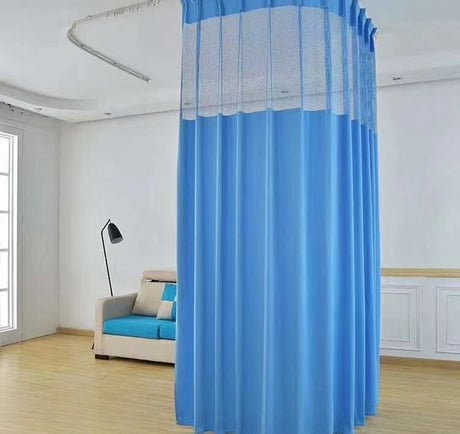Acoustic Curtain Fabrics: Reducing Noise Pollution with Advanced Sound Absorption Technologies
11/29/20244 min read


Understanding Noise Pollution and Its Impact
Noise pollution is defined as unwanted or harmful sounds that disrupt the natural soundscape. Common sources of noise pollution include transportation systems, industrial activities, construction work, and even loud music. In urban environments, factors such as dense traffic and bustling city life contribute significantly to rising noise levels, leading to an acoustic backdrop that many are unable to escape from. The World Health Organization (WHO) has reported alarming statistics indicating that approximately 50% of urban dwellers are exposed to noise levels that pose potential health risks.
The effects of excessive noise pollution are not merely a nuisance; they can have profound physical and mental health implications. Research has shown that prolonged exposure to high noise levels can lead to stress, sleep disturbances, and an increase in cardiovascular diseases. Furthermore, noise has been linked to cognitive impairments, particularly among children, as it can hinder learning and reduce focus in academic and professional settings. Consequently, the cumulative impact of noise pollution influences overall well-being, impacting productivity and social interactions.
Mitigating noise pollution in both homes and workplaces is essential, as the implications extend beyond individual discomfort to societal challenges. As urban areas expand and population density increases, the demand for effective acoustic solutions becomes increasingly urgent. One innovative approach to combat this pervasive issue involves the use of advanced sound absorption technologies, such as acoustic curtain fabrics. These materials not only serve the practical purpose of reducing noise levels but also enhance the aesthetic appeal of spaces. Therefore, the integration of such solutions plays a critical role in fostering healthier environments conducive to better living and working conditions.
The Science Behind Acoustic Curtain Fabrics
Acoustic curtain fabrics are specifically designed to mitigate noise pollution through advanced sound absorption technologies. Understanding the science behind these fabrics requires a look at the essential properties that contribute to their efficacy in sound dampening. Central to this technology is the material composition, which plays a crucial role in how sound waves interact with the fabric. Commonly, these fabrics are made from dense materials such as polyester, wool, or special blends that enhance their acoustic properties.
The density of the fabric is instrumental in sound absorption; denser materials typically have better sound-damping capabilities because they can effectively trap sound waves. Furthermore, the thickness of the fabric also contributes to its performance. Thicker curtains possess greater mass, which allows them to absorb lower frequencies, while thinner fabrics may be more effective at absorbing higher frequencies. This interaction between thickness and density allows for a tailored approach depending on the specific acoustic requirements of an environment.
Texture, too, plays a vital role in sound absorption. Fabrics with a textured surface can disrupt sound waves, scattering them and preventing their reflection back into the space. This process helps reduce reverberation and echo, which are significant contributors to the experience of noise pollution. Additionally, the inclusion of air layers within the curtain design can further enhance the absorption capabilities. These pockets of air act as barriers that provide resistance to sound transmission, ensuring it is effectively absorbed before it can propagate into surrounding areas.
Different types of textiles exhibit varying acoustic properties; for instance, heavier velvets or drapes with acoustic linings are specifically engineered to maximize sound-damping performance. By understanding these materials and their characteristics, one can appreciate how acoustic curtain fabrics serve as an effective solution for reducing unwanted noise in various settings.
Benefits of Using Acoustic Curtains in Various Settings
Acoustic curtains are increasingly becoming a popular solution for noise reduction in both residential and commercial environments. Their effectiveness lies in advanced sound absorption technologies that significantly mitigate noise pollution. In residential spaces such as living rooms, bedrooms, and home offices, these curtains can create a serene atmosphere conducive to relaxation and productivity. By minimizing external disturbances, individuals can enjoy better focus, reduced stress levels, and improved overall well-being.
In commercial settings like restaurants, offices, hospitals, and schools, the benefits of acoustic curtains extend beyond noise reduction. For restaurants, acoustic curtains can enhance the dining experience by absorbing sounds from conversations, kitchen activities, and other sources, allowing patrons to enjoy their meals in a more tranquil environment. In office spaces, these curtains contribute to an increase in productivity by reducing auditory distractions, creating an atmosphere that fosters concentration and collaboration.
In healthcare facilities, the advantages are particularly noteworthy. Acoustic curtains play a vital role in maintaining patient privacy while simultaneously minimizing noise from medical equipment and staff movement. This dual functionality enhances patient comfort and promotes a healing environment. Schools benefit as well; these curtains help create quiet learning spaces that are crucial for student success. They assist in limiting disruptive sounds from hallways and adjacent classrooms, fostering a better educational atmosphere.
Moreover, acoustic curtains add aesthetic value to any space. Available in a wide range of colors, patterns, and materials, they can seamlessly blend into the existing decor, enhancing the overall visual appeal. Beyond their functional capabilities, these curtains provide a stylish solution for noise-related issues without compromising on design. Ultimately, the integration of acoustic curtains across various environments contributes significantly to enhanced comfort, privacy, and well-being.
Choosing the Right Acoustic Curtain Fabrics for Your Needs
When selecting acoustic curtain fabrics, several critical factors must be considered to ensure optimal sound absorption and aesthetic appeal. Understanding the specific requirements of your space is crucial in making an informed decision. Firstly, assess the type of room where the curtains will be installed. For example, home theaters or music studios may require heavier, dense fabrics that provide superior acoustic performance, while living spaces may benefit from lighter materials that still dampen sound without overwhelming the decor.
Fabric types play a significant role in sound absorption capabilities. Curtains made from materials such as polyester, velvet, or heavy cotton are often favored for their density and ability to mitigate noise effectively. An important consideration is the fabric's Acoustic Performance Ratings, often indicated by Noise Reduction Coefficient (NRC) values. A higher NRC value signifies better sound absorption, making it essential to compare products and select those with favorable ratings.
Color and design options should also align with your interior aesthetic while serving the primary functional purpose of reducing noise. Popular choices include darker shades that can enhance sound absorption, or patterns that cleverly disguise the curtain's dual purpose. Installation is another crucial aspect; ensure you follow guidelines for mounting the curtains at an appropriate height and width to maximize coverage and absorption. Proper installation can significantly affect the efficiency of the soundproofing capabilities of acoustic curtains.
Maintenance is key to ensuring longevity and consistent performance. Regularly cleaning the fabric according to the manufacturer's instructions will help prevent dust and allergens from accumulating, while also maintaining the fabric's inherent sound-dampening properties. By considering these factors, you can select the most suitable acoustic curtain fabrics tailored to your needs, significantly reducing noise pollution while enhancing your living environment.
Curtains&Fabrics
Design,production,sales,service in curtain fabrics&curtians.
Quality
Products
sales01@anytextile.com
+8615968501933
© 2024. SHAOXING LEYAO IMPORT AND EXPORT CO.LTD All rights reserved.
